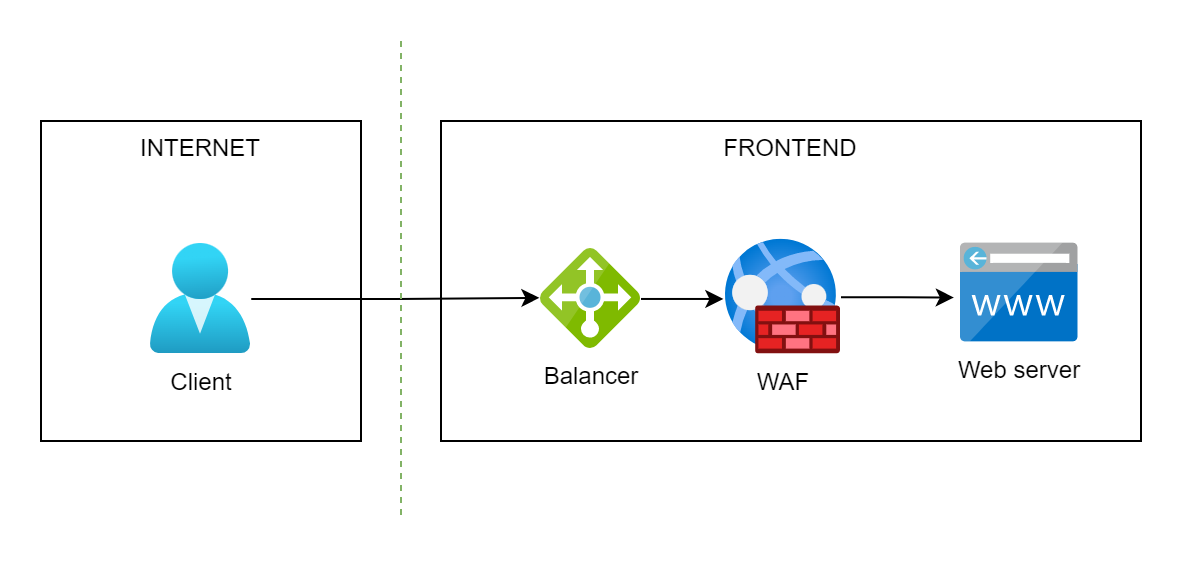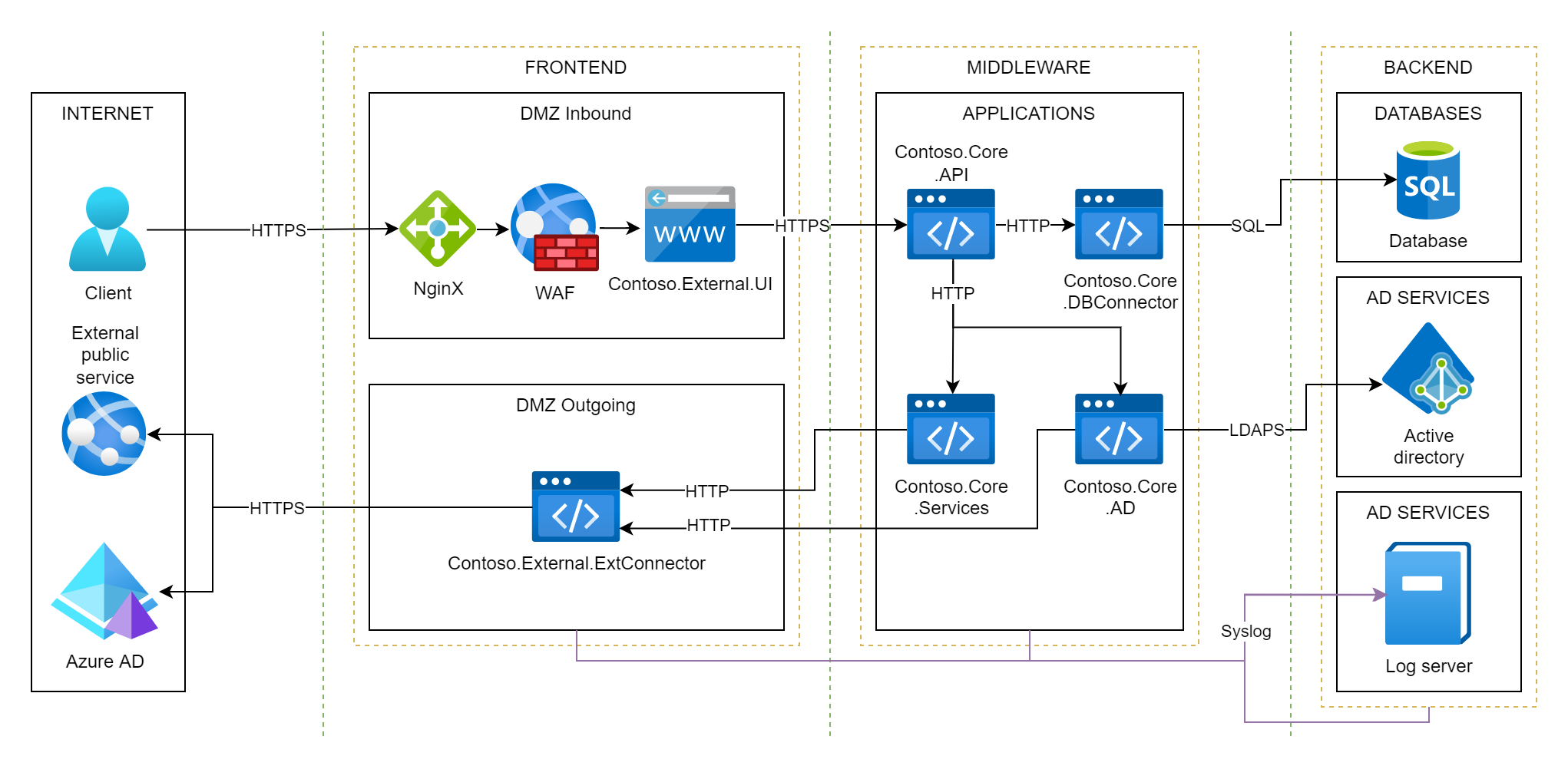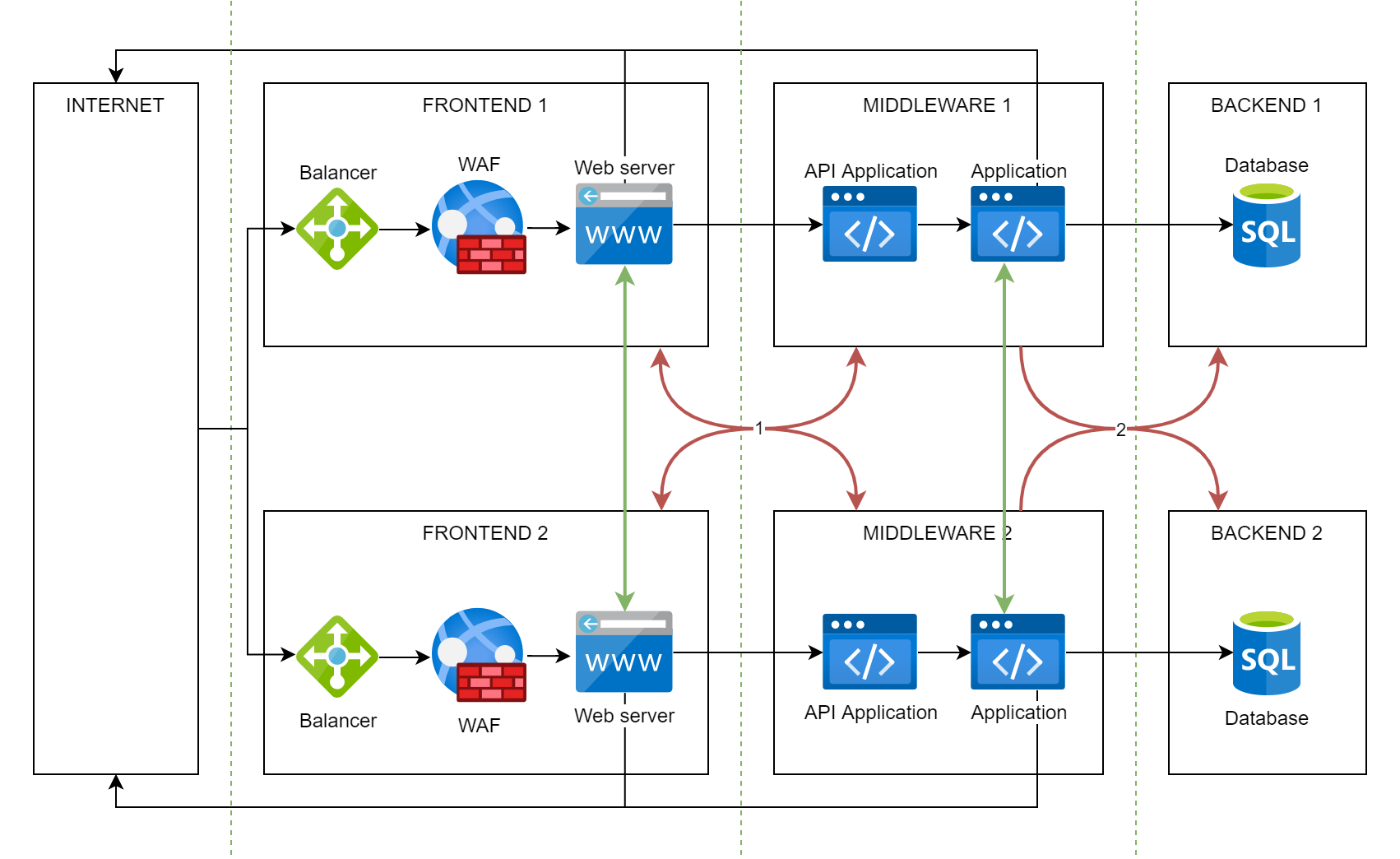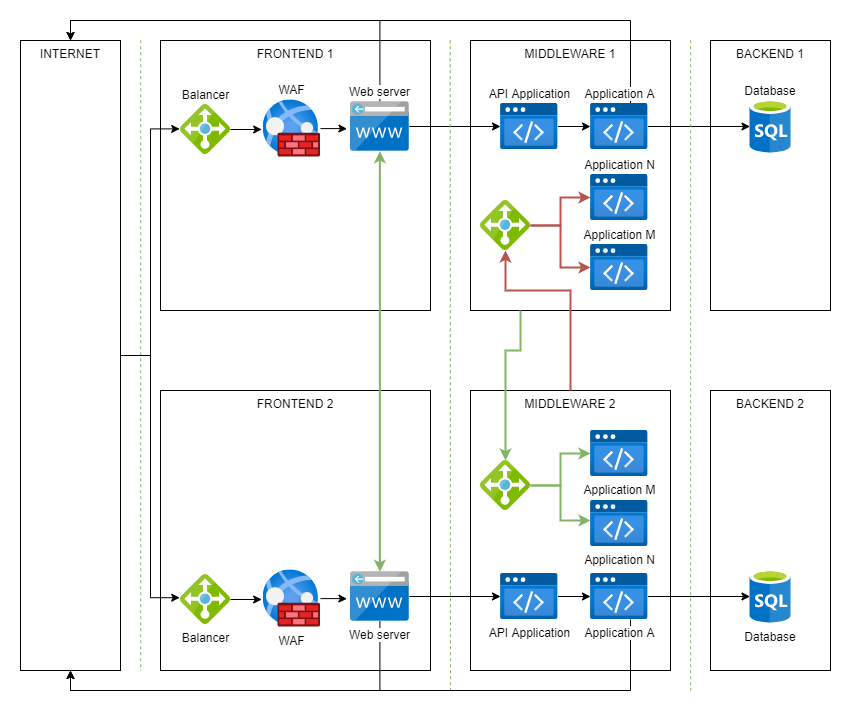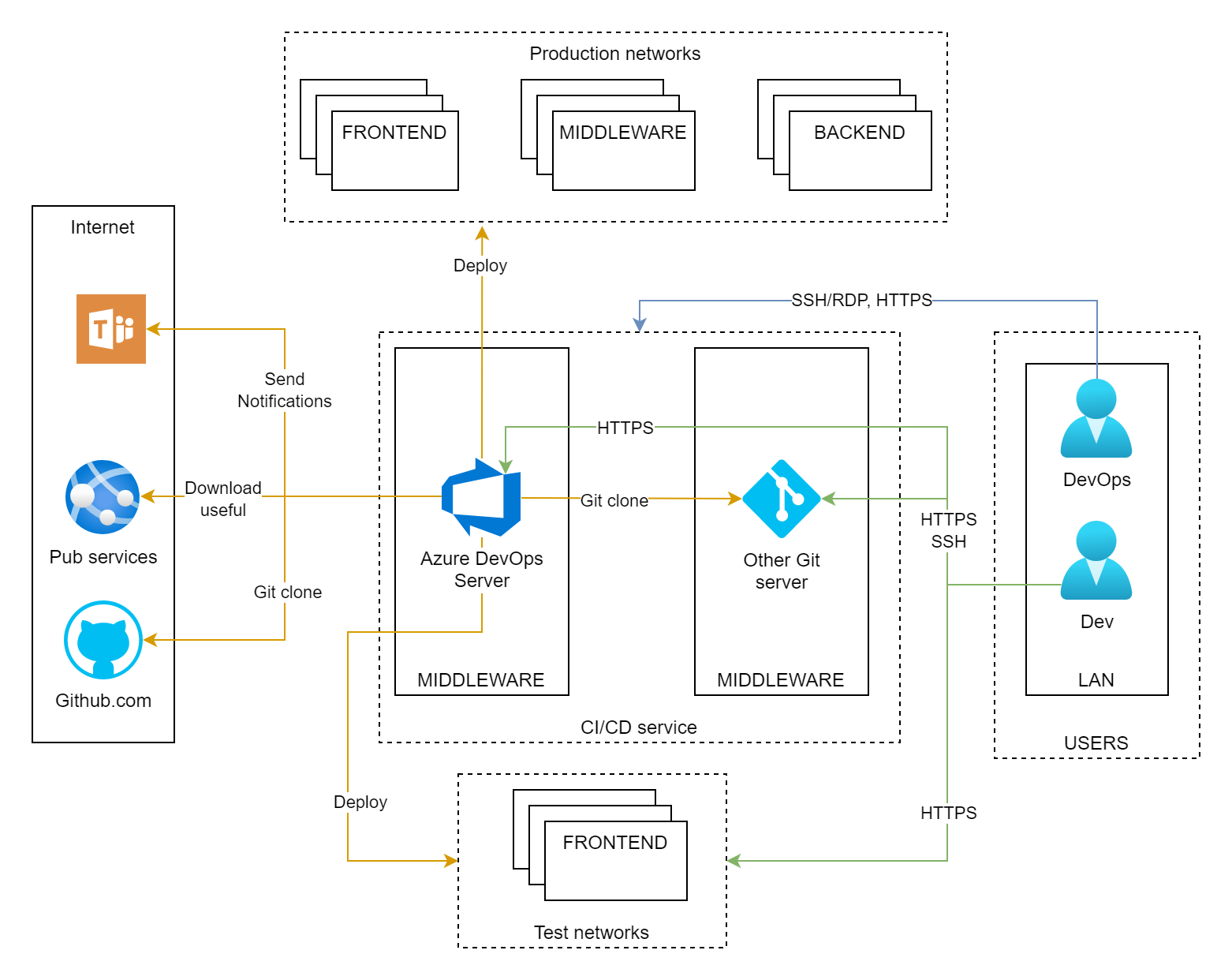Network Segmentation
Network Segmentation
Introduction
- Network segmentation is the core of multi-layer defense in depth for modern services.
Segmentation slow down an attacker if he cannot implement attacks such as:
- SQL-injections, see SQL Injection Prevention Cheat Sheet;
- Compromise of workstations of employees with elevated privileges;
- Compromise of another server in the perimeter of the organization;
- Compromise of the target service through the compromise of the LDAP directory, DNS server, and other corporate services and sites published on the Internet.
- Segmentation will avoid the following situations:
- Executing arbitrary commands on a public web server (NginX, Apache, Internet Information Service) prevents an attacker from gaining direct access to the database;
- Having unauthorized access to the database server, an attacker cannot access CnC on the Internet.
Content
- Three-layer network architecture
- Interservice interaction
- Network security policy
Three-layer network architecture¶
- By default, developed information systems should consist of at least three components (security zones):
- FRONTEND;
- MIDDLEWARE;
- BACKEND.
FRONTEND
- A frontend is a set of segments with the following network elements:
- balancer;
- application layer firewall;
- web server;
- web cache.
MIDDLEWARE¶
- A middleware is a set of segments to accommodate the following network elements:
- web applications that implement the logic of the information system (processing requests from clients, other services of the company and external services; execution of requests);
- authorization services;
- analytics services;
- message queues;
- stream processing platform.
BACKEND
- A backend is a set of network segments to accommodate the following network elements:
- SQL database;
- LDAP directory (Domain controller);
- storage of cryptographic keys;
- file server.
Example of Three-layer network architecture¶
The following example shows an organization’s local network. The organization is called “Сontoso”.
- The edge firewall contains 2 VLANs of FRONTEND security zone:
DMZ Inbound- a segment for hosting services and applications accessible from the Internet, they must be protected by WAF;DMZ Outgoing- a segment for hosting services that are inaccessible from the Internet, but have access to external networks (the firewall does not contain any rules for allowing traffic from external networks).
- The internal firewall contains 4 VLANs:
MIDDLEWAREsecurity zone contains only one VLAN with name APPLICATIONS - a segment designed to host information system applications that interact with each other (interservice communication) and interact with other services;BACKENDsecurity zone contains:DATABASES- a segment designed to delimit various databases of an automated system;AD SERVICES- segment designed to host various Active Directory services, in the example only one server with a domain controller Contoso.com is shown;LOGS- segment, designed to host servers with logs, servers centrally store application logs of an automated system.
Interservice interaction
- Usually some information systems of the company interact with each other.
- It is important to define a firewall policy for such interactions.
The base allowed interactions are indicated by the green arrows and prohibited interactions are incdicated by red in the image below:
- Key Points:
- Access between FRONTEND and MIDDLEWARE segments of different information systems is prohibited;
- Access from the MIDDLEWARE segment to the BACKEND segment of another service is prohibited (access to a foreign database bypassing the application server is prohibited).
- Forbidden accesses are indicated by red arrows in the image below: Prohibited Interservice Communication
Many applications on the same network
- If you prefer to have fewer networks in your organization and host more applications on each network, it is acceptable to host the load balancer on those networks.
- This balancer will balance traffic to applications on the network.
In this case, it will be necessary to open one port to such a network, and balancing will be performed, for example, based on the HTTP request parameters.
- As you can see, there is only one incoming access to each network, access is opened up to the balancer in the network.
- However, in this case, segmentation no longer works, access control between applications from different network segments is performed at the 7th level of the OSI model using a balancer.
Network security policy
- The organization must define a “paper” policy that describes firewall rules and basic allowed network access.
- This policy is at least useful:
- network administrators;
- security representatives;
- IT auditors;
- architects of information systems and software;
- developers;
- IT administrators.
- It is convenient when the policy is described by similar images. The information is presented as concisely and simply as possible.
Permissions for CI/CD
The network security policy may define, for example, the basic permissions allowed for the software development system.
Secure logging
- It is important that in the event of a compromise of any information system, the logs should be protected by syslog server to prevent being modified by an attacker.
The network security policy for this activity looks like this:
- In this example, we are also talking about application logs that may contain security events, as well as potentially important events that may indicate an attack.
Permissions for monitoring systems
- Suppose a company uses Zabbix as an IT monitoring system.
- In this case, the policy might look like this: Zabbix-Example
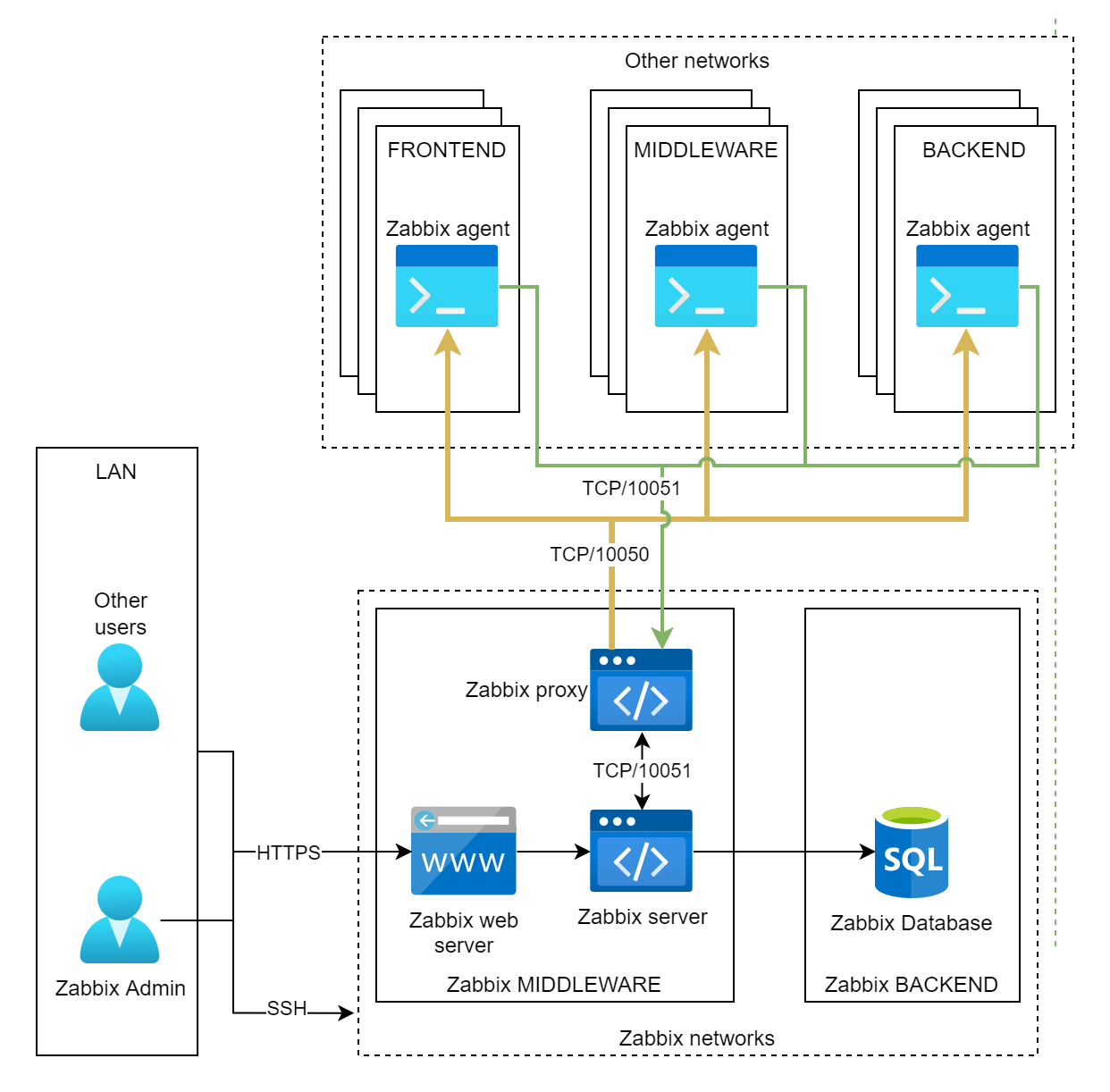
References:
- https://cheatsheetseries.owasp.org/cheatsheets/Network_Segmentation_Cheat_Sheet.html
- https://github.com/sergiomarotco/Network-segmentation-cheat-sheet
This post is licensed under CC BY 4.0 by the author.
